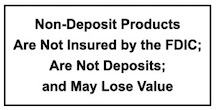In today’s competitive job market, offering more than just a paycheck is essential for businesses that want to attract and retain the best talent. Employee benefits, particularly retirement plans, have become integral to a well-rounded compensation package. As small and mid-sized businesses look for ways to stay competitive, offering financially sustainable retirement options can be a key differentiator.
Why Employee Retirement Plans Matter
Retirement plans provide employees with peace of mind and a sense of long-term security. These benefits indicate that the business is invested in its employees’ future, helping to build loyalty and reduce turnover.
● Building Employee Loyalty: Employees are more likely to stay long-term with companies that value their financial well-being.
● Competitive Edge: Businesses that offer strong benefits packages can stand out when competing for candidates.
Types of Retirement Plans to Consider
Businesses have several options when setting up retirement plans, each with unique benefits for both the employer and employees. The key is choosing a plan that aligns with the business’s financial capabilities while still providing value to employees.
401(k) Plans
One of the most popular options, 401(k) plans allow employees to contribute a portion of their salary toward retirement, often with employer matching. Employers can offer:
- Traditional 401(k): Employee contributions are pre-tax, and taxes are deferred until withdrawal.
- Roth 401(k): Employee contributions are made post-tax, allowing for tax-free withdrawals in retirement.
- Employer Matching: Businesses can choose to match employee contributions up to a certain percentage, adding an attractive element to the plan.
Simple IRA
A Simplified Employee Pension Plan (Simple IRA) is easy to set up and manage, and ideal for small businesses with fewer employees. Contributions are tax-deductible for the employer, making it a cost-effective option.
SEP IRA
Designed for small businesses and self-employed individuals, the SEP IRA allows businesses to contribute to their employees’ retirement funds without the administrative burden of more complex plans.
Profit-Sharing Plans
This option allows employers to make discretionary contributions based on the company’s profitability. It’s a great way to motivate employees by tying their financial future to the company’s success.
Balancing Benefits with Financial Sustainability
One of the most significant concerns for small business owners is the cost of offering retirement benefits. However, it is possible to design a plan that balances employee needs with the company’s financial goals.
Cost Control Strategies:
- Limit Matching Contributions: Offer matching up to a specific percentage to keep costs predictable while still giving employees a meaningful incentive.
- Vesting Schedules: Implement vesting schedules that reward employees for long-term commitment without requiring upfront, immediate benefit payouts.
- Tax Incentives: Take advantage of available tax benefits and credits for offering retirement plans, which can help offset the cost. Click here to read more about tax incentives.
Communicating the Value of Benefits
Offering benefits is only part of the equation; it’s equally important to communicate their value effectively. Employees should understand the long-term advantages of their retirement plan options and how these benefits support their financial future.
- Employee Education:
Conduct workshops or provide resources that explain how to maximize retirement savings and make informed financial decisions. - Clear Communication:
Make sure your employees fully understand the specifics of their retirement plan, including contributions, vesting, and matching. Clear communication helps employees appreciate the value of the benefits you offer.
Investing in employee retirement plans and benefits is more than a financial decision—it’s a commitment to the future of your business and your workforce. By offering the right mix of retirement options and complementary benefits, businesses can create a supportive, attractive work environment that leads to long-term success.
Maximizing Tax Incentives for Employee Retirement Plans in 2024
1. Retirement Plan Startup Costs Tax Credit:
Businesses with 100 or fewer employees can claim a credit of 50% of the costs for starting a retirement plan (such as a 401(k) or SIMPLE IRA), up to $5,000 per year for the first three years.
2. Auto-Enrollment Tax Credit:
Companies that include automatic enrollment in their retirement plans can receive an additional $500 per year for three years to encourage employee participation.
3. Employer Contributions Tax Deduction:
Employer contributions to retirement plans are tax-deductible up to 25% of the compensation paid to employees, reducing the business’s taxable income.
4. Saver’s Credit for Employees:
Encourage employee participation by promoting the Saver’s Credit, which provides eligible employees with a credit of up to $1,000 (or $2,000 for couples) for contributions to their retirement plans.
5. Section 179 Deduction for Plan Setup Equipment:
Businesses can deduct the cost of office equipment or software needed to administer a retirement plan under Section 179, offering additional savings on plan setup.
6. Payroll Tax Savings on Roth 401(k) Contributions:
Employer matching contributions to Roth 401(k) plans are not subject to FICA taxes, offering savings on payroll taxes.
7. State-Specific Tax Incentives:
Some states offer additional tax incentives for businesses sponsoring retirement plans. Check local programs for extra savings.
For more information about retirement plans tax incentives, visit:
https://www.irs.gov/retirement-plans/retirement-plans-startup-costs-tax-credit

